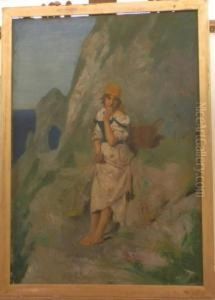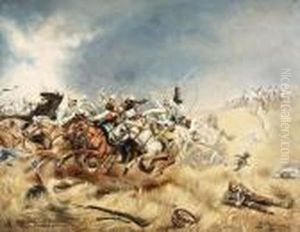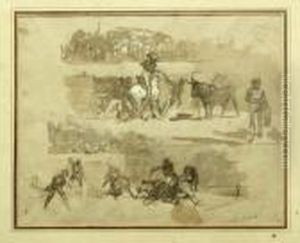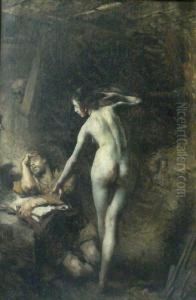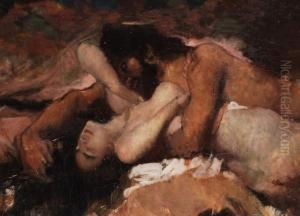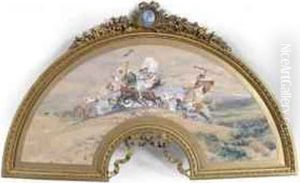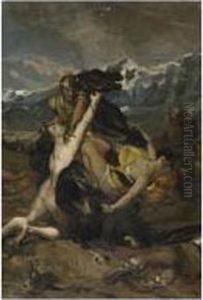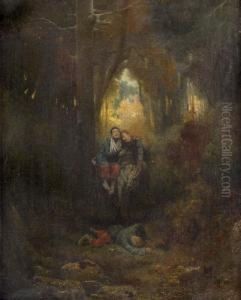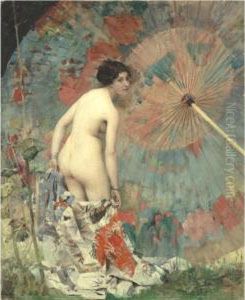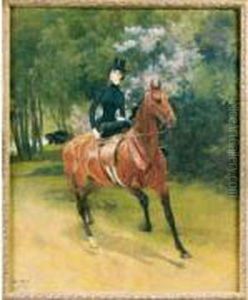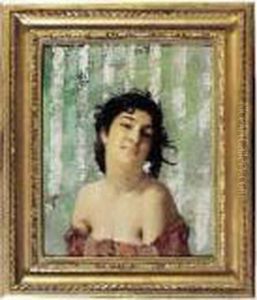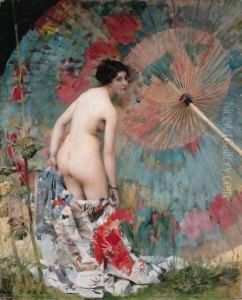Aime Morot Paintings
Aimé Morot was a notable French painter and sculptor born on March 16, 1850, in Nancy, France. He was celebrated for his historical and genre paintings, particularly those depicting scenes from French history and allegorical themes. Morot studied at the École des Beaux-Arts in Paris under Alexandre Cabanel, a well-known academic painter of the time. His talent was recognized early in his career; he won the prestigious Prix de Rome in 1873, which allowed him to study in Rome for several years.
During his time in Italy, Morot was deeply influenced by the art of the Renaissance and the classical tradition. After returning to France, he achieved considerable success and was commissioned to create works for various public institutions. Among his acclaimed works is 'Le Bon Samaritain' (The Good Samaritan), which was shown at the Salon of 1880 and received the Medal of Honor. Morot's paintings often featured dramatic lighting and a fine attention to detail, characteristics that made his work popular with both critics and the public.
Beyond painting, Morot also excelled in sculpture. He created several public monuments, including a notable statue of General Gouraud that stands in Paris. Throughout his career, Morot remained involved with the École des Beaux-Arts, becoming a professor there in 1889. He taught a number of students who would go on to become significant artists in their own right.
Morot was also involved in the renovation of the Panthéon in Paris, for which he painted a series of murals. His contributions to art were recognized with numerous awards and honors, including the Legion of Honor, France's highest order of merit for military and civil merits, which he received in 1884.
Aimé Morot died on July 14, 1913, in Paris. His legacy is preserved in the collections of many French museums, including the Musée d'Orsay and the Musée des Beaux-Arts in his hometown of Nancy. Morot's work is considered an important part of French academic painting, reflecting the values and aesthetics of the Belle Époque era in which he lived and worked.

